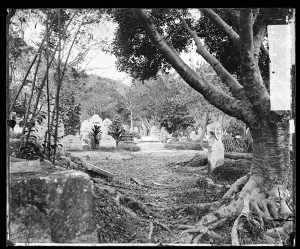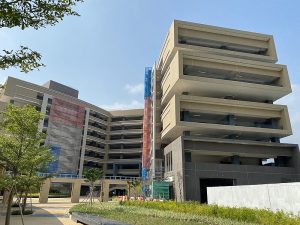4.3 Burial Capacity & Space Limits

In addition to the environmental impact, another big problem associated with conventional body disposal methods is that we are running out of room to bury our dead in existing cemeteries (e.g., in graves for caskets or urns, in mausoleums, columbariums, etc.) and geographically, as not all land is usable for cemeteries/burials (Perfect Memorials, n.d.; Walls et al., November 5, 2014). This situation is particularly problematic for members of religions whose beliefs dictate that bodies must be buried in their entirety (e.g., Muslim and Orthodox Jewish) (Uzielli & O’Brien, 2016). Finding a way to deal with this situation becomes even more dire when we consider the space requirements that may be needed for the large aging population (O’Reilly, 2019; Simões & Perobelli, April 1, 2021).
Issues with cemetery capacity are not a new phenomenon. For example, in Paris in late 1700s cemeteries were literally overflowing with corpses (Geiling, March 28, 2014). The chosen solution was to dig up the remains of the dead and move the bones to the tunnels under the city, that had existed since the 13th century (Vitek, October 27, 2021). This process continued, on and off into the mid-1800s, with the tunnels used as a direct burial location at some points in time (Geiling, March 28, 2014). In total, it is estimated that the bones of around six million Parisian’s are housed in the Catacombs of Paris (Vitek, October 27, 2021).

Today, cemetery capacity issues in various parts of the world are making the news. For example, in 2019 Happy Valley Christian cemetery, one of Hong Kong’s oldest cemeteries, dating back to 1845 (see image above), made the headlines because it had reached its space capacity, with hundreds of thousands of human remains waiting for a spot (O’Reilly, 2019). In 2015, BBC News did a story entitled “The word is running out of burial space.” It reported on how cemeteries in the UK are largely full and some have ceased providing burial services (McManus, March 13, 2015). As a result of the 6 million COVID-19 related deaths worldwide (as of March 2022), the issue has become even more dire in various parts of the world. In Sao Paulo Brazil, for instance, efforts to empty old graves have had to be sped up to make room for soaring death tolls (Simões & Perobelli, April 1, 2021).
VIDEO: Hong Kong is Running Out of Space
This video explores the issues Hong Kong is facing in terms of space to put their dead and some potential future solutions.
One solution being explored to address limited space for the dead and inground burials is to build up. Multistory columbariums are already in use in some cities (i.e., Japan, Hong Kong – see image below of the Tsand Tsui Columbarium in Hong Kong) (Adelstein, March 18, 2019; Daifuku, n.d.). Other ideas include vertical cemeteries that can house caskets in high rise structures. There are proposals to build such structures in Oslo Norway, Paris France, Mubai India, and Santos Brazil (Hariyono, 2015). These structures would house not only the dead, but could also provide a variety of services including onsite faculties for funerals, prayer, and visiting with deceased loved ones (Hariyono, 2015; Philjake, October 28, 2018).


